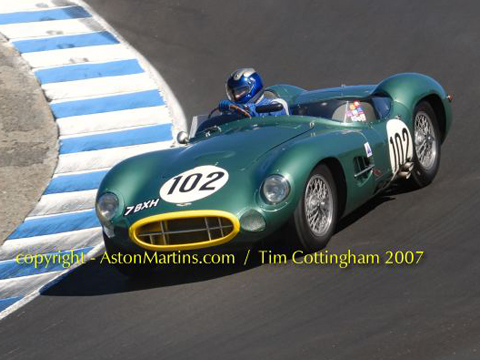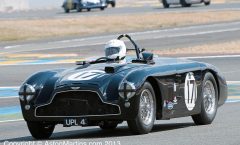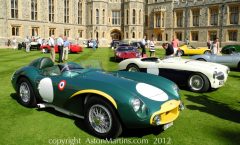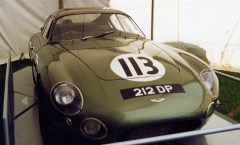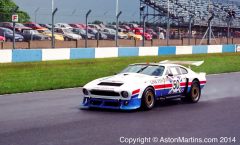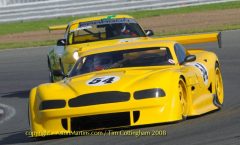Initially the DB3 and then the painfully beautiful DB3S captivated the crowds during the early and mid 50’s. Le Mans eluded David Brown for years until the dream became reality in 1959 when Aston Martin took 1st and 2nd places in the French Classic. The DBR1 went on to take the Sportscar championship later the same year. The similar DBR2 had limited success but was mostly hampered by a larger engine that precluded it from important international competitions.
David Brown also wanted to compete in Formula 1 in the late 1950’s although the DBR4 was late for the party. Just as the front engined car went racing, the tide was turning for rear engined machines that continues to this day.
The DB4GT based Project cars flew the flag for the marque during the mid 60’s in the GT class, and later in the 60’s came the Lola T70 with the then new V8 engine. Both were unable to repeat the success of the DBR1.
The 1970’s were difficult times for AML but a privately entered V8 was entered for both the 1977 and 1979 Le Mans. RHAM/1 was both fast and dramatic but became less and less of the original DBS V8 Aston as it was developed.
The Aston Martin V8 engine also saw service in the Nimrod of the late 70’s and the EMKA and Cheetah of the early 80’s. But the greatest of the V8 racing Aston Martins was the awesome AMR1 of 1989; a wonderful Group C machine which had an unfortunately short life.
And despite the ending of V8 production in 2000, an independent constructor, David Ellis, has produced a Virage-like GT car for the 2001 season.
On the 4th December 2003, AML confirmed all those rumours that they would be returning to international motor racing and announced the creation of a new division within the company to be known as Aston Martin Racing. By the end of 2004, the DBR9 was shown to the press and has gone on to be an effective force in GT1 sportscar racing throughout the world under works, works supported and private teams. Another product of AMR is the more production car based DBRS9 suitable for the GT3 catagory.

